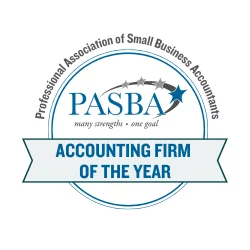Learn how federal tax classification affects your taxes and liability. J.R. Martin & Associates can help you choose the right option for your business and financial health
Understanding Federal Tax Classification: A Comprehensive Guide
Federal tax classification determines how the Internal Revenue Service (IRS) categorizes businesses and individuals for tax purposes. This classification is crucial because it directly impacts how income is reported, taxed, and which forms and regulations apply. For businesses, selecting the correct tax classification can significantly affect liability, tax rates, and compliance requirements. For individuals—especially sole proprietors and independent contractors—understanding tax status is equally vital to meet legal obligations.
In this guide, we will break down the different types of federal tax classifications, discuss the importance of choosing the appropriate one, and explain how these choices can impact both businesses and individuals financially.
Types of Federal Tax Classifications
The IRS recognizes various forms of business entities, each classified differently for tax purposes. The most common tax classifications are:
- Sole Proprietorship
- Partnership
- C Corporation
- S Corporation
- Limited Liability Company (LLC)
- Nonprofit Organizations
Each classification has unique features and tax implications and understanding them can help you make informed decisions.
1. Sole Proprietorship
A sole proprietorship is the simplest form of business entity. It is unincorporated and owned by one individual, with no legal distinction between the owner and the business. As a result, the owner directly controls profits, losses, and liabilities.
Key Features:
- Tax Reporting: Business income and expenses are reported on the owner’s personal tax return using Schedule C (Form 1040).
- Tax Rates: Income is taxed at the individual’s personal income tax rate.
- Liability: The owner is fully liable for all business debts and obligations, meaning personal assets are at risk.
While sole proprietorships are easy to set up and require minimal paperwork, they may not be ideal for those seeking limited personal liability or anticipating growth. If your business scales or faces substantial risk, transitioning to a different classification may offer better protection.
2. Partnership
Partnerships allow two or more individuals (or entities) to share ownership of a business. Partnerships are relatively easy to form and provide flexibility in management and profit-sharing arrangements. Common types of partnerships include general partnerships, limited partnerships (LPs), and limited liability partnerships (LLPs).
Key Features:
- Tax Reporting: Partnerships file an informational return (Form 1065) with the IRS but do not pay taxes at the business level. Instead, profits and losses are “passed through” to individual partners, who report their shares on personal tax returns using Schedule K-1.
- Tax Rates: Each partner pays taxes at their individual tax rate on their share of the business’s income.
- Liability: In general partnerships, all partners are personally liable for the business’s debts and obligations. Limited partners in LPs or LLPs typically have liability limited to their investment in the business.
A partnership can work well for professionals who want to share responsibility and profits. However, in general partnerships, each partner bears full responsibility for the actions, debts, and obligations of the business. This makes trust and thorough risk assessment vital before entering a partnership. For those seeking liability protection, forming an LLP or LP may be a better choice.
3. C Corporation
A C Corporation is a legal entity that is separate from its owners, offering significant legal protections to shareholders. Unlike sole proprietorships and partnerships, C Corporations face “double taxation,” where the corporation itself is taxed on its profits, and shareholders are taxed again on any dividends they receive.
Key Features:
- Tax Reporting: C Corporations file Form 1120 to report income and pay taxes at the corporate level. Dividends distributed to shareholders are reported on individual tax returns and taxed again at personal tax rates.
- Tax Rates: Corporate profits are taxed at the federal corporate tax rate, while dividends are taxed at individual income tax rates.
- Liability: Shareholders enjoy limited liability, meaning they are not personally liable for the corporation’s debts or obligations.
C Corporations are especially attractive to larger businesses because they can raise capital by selling stock to investors or the public. The ability to attract venture capital and other investors helps fuel growth, innovation, and acquisitions. Additionally, C Corporations have a perpetual existence, meaning the business remains intact even if ownership changes.
However, double taxation can significantly impact profitability. This drawback often makes C Corporations less desirable for smaller businesses looking to distribute profits efficiently.
4. S Corporation
An S Corporation provides many of the benefits of a C Corporation—such as limited liability for shareholders—without the burden of double taxation. In an S Corporation, profits and losses pass through to the shareholders’ personal tax returns, avoiding corporate-level taxes. However, there are restrictions, including a cap on the number of shareholders and limitations on who can be a shareholder.
Key Features:
- Tax Reporting: S Corporations file Form 1120S and issue Schedule K-1s to shareholders, who report their share of the income or loss on their personal tax returns.
- Tax Rates: Shareholders are taxed at individual income tax rates on their portion of the profits.
- Liability: Like C Corporations, S Corporations offer limited liability protection.
S Corporations can be an excellent option for small and medium-sized businesses seeking limited liability and pass-through taxation. However, there are several restrictions:
- Shareholder Limits: S Corporations can have no more than 100 shareholders, and all must be U.S. citizens or residents.
- One Class of Stock: S Corporations may only issue one class of stock, limiting flexibility in dividend and liquidation preferences.
- Corporate Formalities: S Corporations must adhere to strict governance rules to maintain their status.
Despite these limitations, an S Corporation can provide significant tax advantages for the right business structure.
5. Limited Liability Company (LLC)
An LLC combines the liability protection of a corporation with the tax flexibility of a partnership. LLCs can elect how they wish to be taxed, making them one of the most versatile business entities.
Key Features:
- Tax Reporting: Single-member LLCs are taxed as sole proprietorships unless they elect corporate taxation. Multi-member LLCs are typically taxed as partnerships but may also choose to be taxed as C or S Corporations.
- Tax Rates: LLCs with pass-through taxation report profits and losses on members’ personal tax returns, who pay taxes at their individual rates.
- Liability: LLC members have limited liability, protecting their personal assets from the business’s debts and obligations.
LLCs are popular because they offer flexibility in tax classification, management, and ownership. However, some states, such as California, impose additional fees or taxes on LLCs, which can add complexity.
6. Nonprofit Organizations
Nonprofits are formed for charitable, educational, religious, or other public service purposes. By applying for tax-exempt status under Section 501(c)(3) of the IRS code, nonprofits can avoid paying federal income taxes.
Key Features:
- Tax Reporting: Nonprofits must file Form 990 annually to maintain tax-exempt status.
- Tax Rates: Nonprofits do not pay federal income taxes, provided they comply with IRS requirements. However, they may still owe employment taxes and unrelated business income taxes if they engage in for-profit activities.
- Liability: Nonprofit board members and officers typically enjoy limited liability.
While tax-exempt status can offer significant savings, nonprofits must strictly adhere to IRS guidelines to retain their status.
Choosing the Right Tax Classification
Choosing the right federal tax classification is a critical decision that affects your tax liabilities, reporting requirements, personal liability, and even your ability to attract investors. Here are a few key factors to consider:
- Liability: How much personal liability protection do you need? Corporations and LLCs offer limited liability, while sole proprietorships and general partnerships do not.
- Taxation: Do you prefer business-level taxation or pass-through taxation? If avoiding double taxation is important, an S Corporation or LLC may be the best option.
- Management Flexibility: How much flexibility do you want in managing your business? LLCs typically offer more flexibility in management and ownership compared to corporations.
- Growth Potential: If you plan to raise capital by selling shares, forming a C Corporation may be your best option, as it allows for issuing stock.
Let J.R. Martin Help You Take Control of Your Financial Future
Understanding federal tax classification is essential, as it impacts everything from tax obligations to personal liability. Making the right choice can make a significant difference in your financial health, but the process can be complex. That’s where J.R. Martin & Associates come in. They can assess your business needs, guide you through the tax classification process, and help you make informed decisions aligned with your goals.
To find out how to partner with J.R. Martin to secure your financial future, click here.



